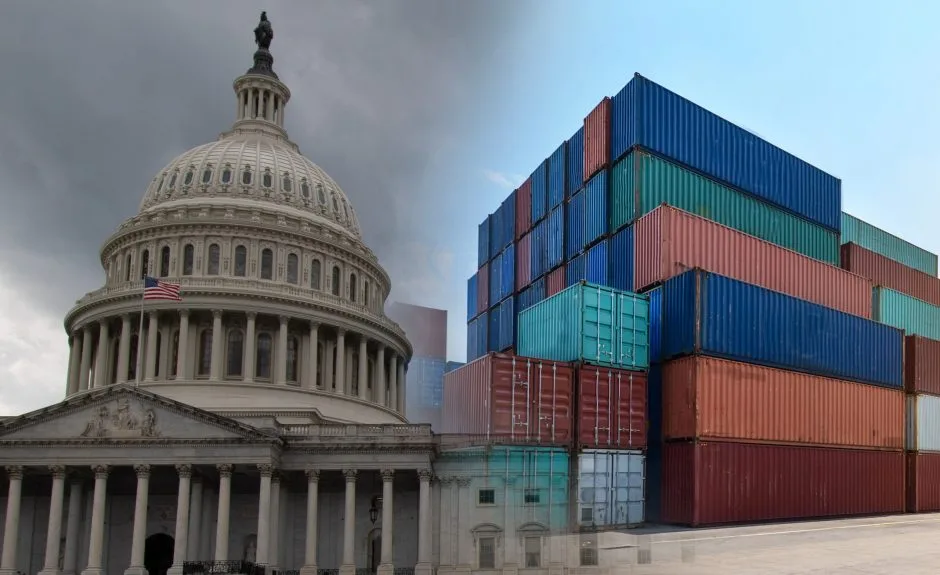As we progress through 2025, the global economic landscape is increasingly influenced by a resurgence of protectionist trade policies and escalating geopolitical tensions. The reimplementation of aggressive tariffs by the United States, coupled with strained international relations, is reshaping trade dynamics and economic forecasts worldwide. This article delves into how these factors are impacting the global economy, examining projections, regional effects, and potential long-term consequences.
Global Economic Projections: A Mixed Outlook
The International Monetary Fund (IMF) projects global growth at 3.3% for both 2025 and 2026, a rate below the historical average of 3.7% from 2000 to 2019. This forecast reflects an upward revision for the United States, offset by downward revisions in other major economies. Global headline inflation is expected to decline to 4.2% in 2025 and to 3.5% in 2026, converging back to target earlier in advanced economies than in emerging markets.
The World Bank offers a slightly more conservative estimate, anticipating global growth to hold steady at 2.7% in 2025-26. However, the global economy appears to be settling at a low growth rate that will be insufficient to foster sustained economic development.
The Resurgence of Tariffs: U.S. Trade Policy in Focus
In early 2025, the United States reintroduced significant tariffs under President Donald Trump’s administration. These include levies up to 245% on Chinese imports and a 10% blanket import tariff globally. These measures have caused significant market volatility and uncertainty, prompting concerns about a potential recession. Harvey Schwartz, CEO of Carlyle Group, noted that the uncertainty is leading business leaders to shift from growth strategies to contingency planning.
The World Trade Organization (WTO) has revised its 2025 global merchandise trade forecast from a 3.0% increase to a 0.2% decline, citing the resurgence of U.S. tariffs and broader economic spillovers as key factors. The WTO warns that a full decoupling between the U.S. and China could shrink global GDP by 7% in the long term.
Geopolitical Tensions and Their Economic Implications
Geopolitical tensions are further complicating the global economic outlook. The IMF and World Bank meetings have been dominated by discussions on U.S. tariffs and their impact on global trade. Countries like Japan and South Korea are actively seeking tariff relief, while questions linger about the U.S. administration’s commitment to international financial institutions.
The IMF has tempered its criticism of the U.S. amid these tensions, emphasizing positive elements such as U.S. trade imbalance concerns and Argentina’s reform under libertarian President Javier Milei. However, the IMF and World Bank face an uncertain relationship with the U.S., which has hinted at potential reforms that could cut references to climate action, gender equity, and diversity.
Regional Impacts: Divergent Economic Trajectories
United States
Despite the reintroduction of tariffs, the U.S. economy remains relatively robust, with the IMF projecting 2.7% growth in 2025. This is driven by strong consumer spending and capital investment.
Euro Area
The euro area faces a more subdued outlook, with growth projected at just 1.0%. Germany is teetering near recession, while France and Italy show limited recovery.
Asia-Pacific
The Asia-Pacific region is experiencing dampened growth due to the tariff war, but not substantial damage. Lower energy prices and lower import prices from China are expected to push inflation down and provide central banks room to ease monetary policy to support growth if needed.
Business Response and Strategic Adjustments
Businesses are navigating this complex environment by reassessing supply chains and investment strategies. The recent wave of tariffs and other trade controls has created radical uncertainty for businesses. Decision-makers are advised to position their companies to thrive in the evolving landscape.
Companies like DHL are altering shipping routes, and new Boeing aircraft are returning from China, indicating early signs of disruption. Schwartz advised companies to remain vigilant, suggesting they “stay buckled,” as the market may still face further turbulence.
Long-Term Considerations and Policy Recommendations
The current trajectory suggests a shift from a rules-based to a deals-based trading system, increasing unpredictability in trade policy. The WTO highlights the challenges in reliable forecasting due to these shifts.
To mitigate risks, policymakers are encouraged to engage in multilateral dialogues, reinforce commitments to international institutions, and consider the broader implications of protectionist policies. Ensuring transparency and stability in trade policies can help restore business confidence and support global economic growth.
The interplay of tariffs and geopolitical tensions is significantly shaping the global economic outlook for 2025. While some economies demonstrate resilience, the overarching trend points to increased uncertainty and potential long-term challenges. Strategic policy decisions and international cooperation will be crucial in navigating this complex landscape and fostering sustainable economic growth.







